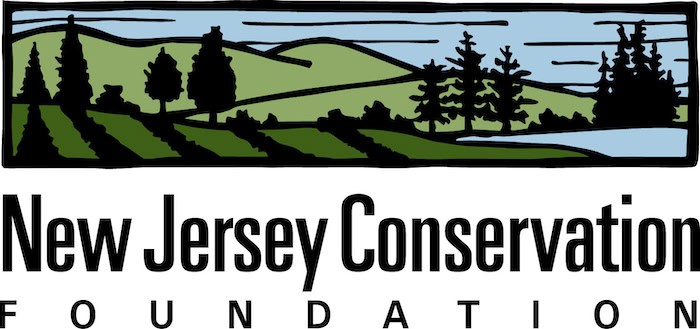By Alison Mitchell
If you love fall’s spectacular colors, but not raking leaves, here is some good news: You can stop! By leaving your leaves alone, you will help your lawn, local wildlife and the environment.
Leaves falling from trees should not be seen as trash to be collected and hauled away.
Decomposing leaves are nature’s fertilizer, full of organic nutrients that strengthen soil, grass and gardens – for free.
Fallen leaves absorb rainwater and release moisture back into soil and plants as they decompose, helping to control storm water runoff.
Leaf litter also provides valuable winter habitat and forage sources for birds, insects, amphibians and other small wildlife.
There are about 40 million acres of lawn in the continental United States, according to calculations based on NASA satellite data, making turf grass the nation’s biggest “crop.”
Each fall, homeowners spend huge amounts of time and money raking, blowing and vacuuming leaves off their lawns. It is not time and money well spent. Gasoline-powered equipment creates noise and air pollution, and contributes to climate change.
For those concerned that their grass will not survive being covered with a thick layer of leaves, there is a simple solution – shred the leaves.
All you need to do is mow your lawn as usual without a collection bag. The mower will chop fallen leaves into small pieces and your lawn will still look tidy as the leaves work their magic. If you have a mulching mower, great; if not, just make sure the chopped leaves don’t clump.
The leaves will contribute to healthy soil, which is composed of minerals, organic matter and organisms that break down organic matter.
“A lawn is a living system capable of recycling nutrients in leaves,” points out Dr. Emile DeVito, New Jersey Conservation Foundation’s staff biologist, who comes from a family of landscapers.
“If you are carting away all the leaves, you are increasing fossil fuel use and missing the opportunity to use their nutrients to keep your yard healthy.
“Think of your lawn as a miniature forest where everything is recycled, creating a diverse biological community that does not need inputs of fertilizer,” DeVito says.
Shredded leaves are great to spread on garden beds, but you can do nature an even bigger favor by leaving whole leaves as mulch around the base of shrubs and perennials to protect them from winter damage.
There, they will support insect pollinators, and birds and mammals that rely on finding insects for food during the winter.
Most native insects are not like monarch butterflies, which migrate south each fall. Many pollinators and other beneficial insects survive winter’s cold by sheltering under leaf litter, either as adults, caterpillars, eggs, larvae, nymphs or cocoons.
For example, wooly bear caterpillars – which become Isabella tiger moths – tuck themselves into a pile of leaves for protection.
The butterflies known as red-banded hairstreaks lay their eggs on dead oak leaves, which in the spring will become food for the emerging caterpillars.
Luna moths and swallowtail butterflies disguise their cocoons and chrysalises as dried leaves, which blend in with the real leaves on the ground.
Bumblebees also rely on leaf litter. Mated queen bumblebees dig shallow burrows in the soil to hibernate for the winter, so a thick layer of leaves gives them much-needed protection.
Other creatures that live in fallen leaves – including spiders, snails, worms, beetles and millipedes —are food sources for birds, mammals, turtles and amphibians.
Mulches available at garden centers are no match for a mound of fallen leaves.
“Dyed mulch is virtually sterile, providing no wildlife benefits as it rots and rapidly produces greenhouse gases,” noted DeVito.
This fall, enjoy your time not spent raking, blowing, vacuuming and bagging leaves.
If you want to turn your property into a haven for wildlife, here are a few other things you can do:
• Create a brush pile. Instead of getting rid of tree branches blown down by autumn winds, pile them up in a corner of your yard. The brush pile will shelter birds and small mammals from winter’s cold, and also give them a place to hide from predators;
• Don’t “deadhead” flowering plants in your garden and along the edge of your lawn. Many native blooms – such as black-eyed Susans, asters, coneflowers and thistles – have seed heads that provide food for foraging birds in winter if left standing;
• Remove invasive non-native plants. Invasive species displace native plants that provide food and habitat for wildlife. One of the worst is Japanese barberry, recognizable in fall by its bright scarlet berries.
Winged euonymus, also known as burning bush, is another highly recognizable invasive this time of year because of the pinkish-red color of its leaves. The New Jersey Invasive Species Strike Team has a full list of invasive plants that should be taken out.
• Plant natives. The cool, crisp days of fall are a great time to plant native trees and shrubs. Dogwood and spicebush are New Jersey natives that produce nutritious fruit for birds during their fall migration.
Junipers, bayberries, hollies, hawthorns and sumacs produce fruits and berries eaten by birds during cold weather. While you are visiting your local nursery, you may be lucky enough to find bargains on leftover perennial flowers that will bloom next summer.
To learn more about creating an insect- and bird-friendly landscape, go to https://njaudubon.org/gardening-for-wildlife/
And for information about preserving New Jersey’s land and natural resources, visit the New Jersey Conservation Foundation website at www.njconservation.org or contact me at [email protected]
Alison Mitchell is a co-executive director of the New Jersey Conservation Foundation, Far Hills.

